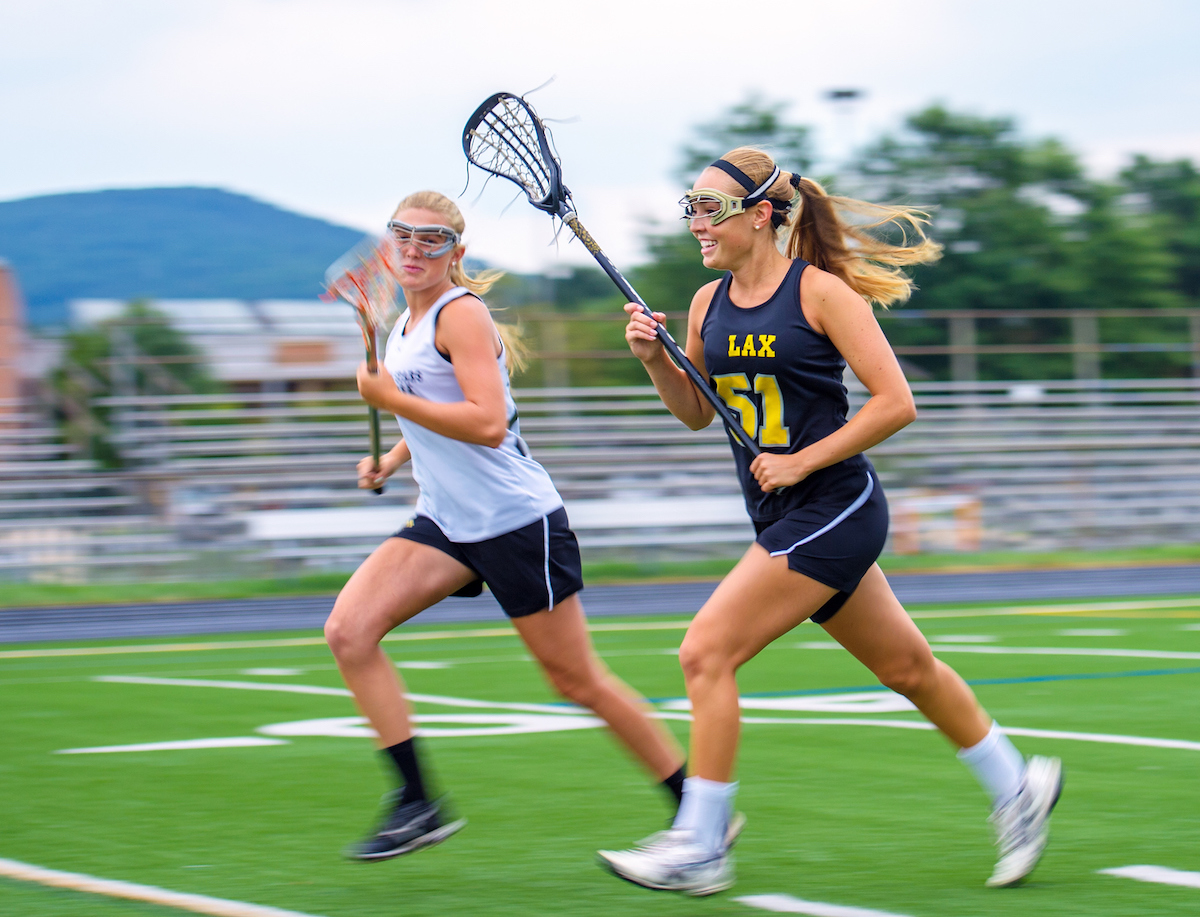
High school girls lacrosse players competing in states that mandate headgear have a lower risk of concussion than players in states not requiring headgear, according to a landmark research project.
The study, conducted by George Mason University professor Shane V. Caswell and other researchers, including Mason alumna Patricia Kelshaw (BS athletic training '14; MS exercise, fitness, and health promotion '16; PhD education '20), was published in August was published in August in the British Journal of Sports Medicine.
“Girls’ lacrosse is the fastest growing high school team sport in the United States,” said Caswell, executive director of Mason’s Sports Medicine Assessment, Research and Testing (SMART) Laboratory and a professor in the College of Education and Human Development’s Athletic Training Education Program. “There is considerable debate if mandating headgear will lower the risk of concussion but little data has been available to inform decision makers, so we were interested in studying whether mandating wearing headgear use would reduce concussions.”
The primary goal of the study was to examine concussion rates in girls high school players wearing headgear specifically designed for women's lacrosse against those of girls without headgear. Players were monitored across three seasons and included teams from Florida, which mandates the use of approved headgear of all high school girls players.
Caswell said the research shows that girls playing in states not mandating lacrosse headgear had a 59% greater overall incidence of concussions than those required to wear headgear. Caswell said the results "will provide much needed data to inform policy discussions about athlete safety at state and national levels."
He added that as part of a larger study, the research team is reviewing game video to compare the rate of impacts to the head in states with and without headgear mandates. Preliminary findings suggest that in both states with and without a headgear mandate, most illegal hits do not result in a penalty.
"There is an important conversation to be had about the shared roles lacrosse headgear and rules enforcement have in ensuring the game is played safely," Caswell said.
Kara Mupo, head women’s lacrosse coach at Mason, said the study serves as an “important reminder to youth-level coaches, as well as middle school, club and high school coaches, to do their due diligence to help avoid serious contact-related injuries.”
Headgear is not required by the NCAA for college women’s lacrosse, but if it is worn must meet ASTM standards.
“This study is a great opportunity for youth-level coaches to reassess the ways in which they are teaching the sport as the game continues to progress,” Mupo said.
